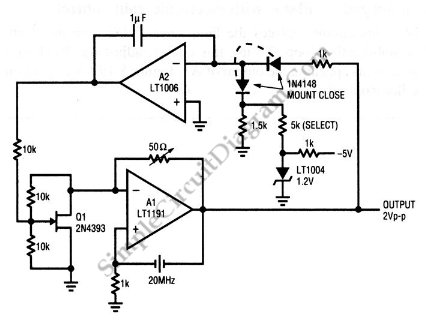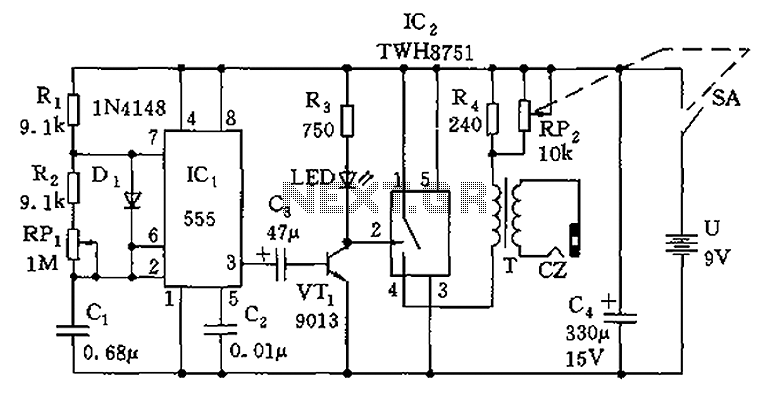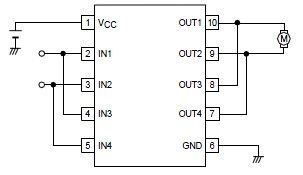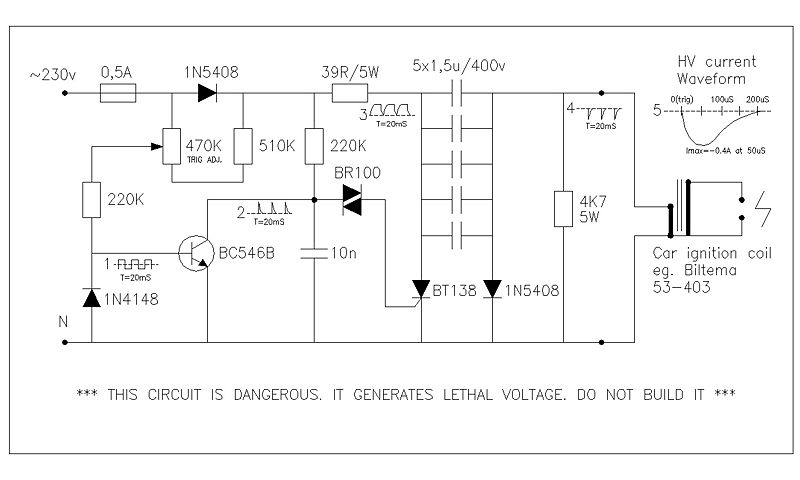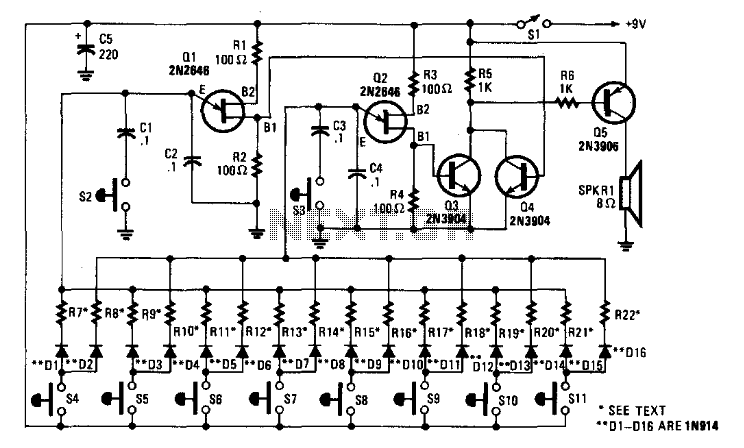
Industrial & Domestic Electronic Kits
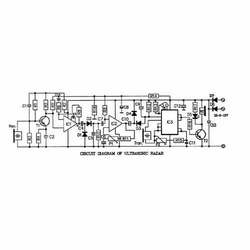
This circuit is a simple and cost-effective design that utilizes an operational amplifier IC 741 (IC1) alongside a push-pull amplifier made with transistors for signal amplification. The project name indicates its intended application, which includes level control in hydroponic systems and monitoring water levels in washing machines. Key features of this circuit include the ability to display fluid levels using meaningful English letters: 'E' for Empty, 'L' for Low, 'H' for Half, 'A' for Above Average, and 'F' for Full Tank. Sensors positioned at each level are submerged in the tank, with their other ends connected through four NOR gates, utilizing IC1. The output is fed into IC2, a BCD to seven-segment display driver, which indicates the fluid level on a seven-segment display. This affordable two-way intercom circuit facilitates bidirectional communication, allowing for both signal transmission and reception. It is constructed around timer IC555 (IC1) and low-power audio amplifier IC386 (IC2), and consists of two parts. The circuit diagram for one part is illustrated, with the output of one unit connected to the input of the other. The two sections are linked via three connection points labeled 'S' for supply, 'O' for output, and 'G' for ground. This circuit can be utilized for basic on/off functions, such as controlling lamps or fans, and has the advantage of being unaffected by ambient light interference, providing a controlled range of approximately 10 meters without the need for focusing lenses. The transmitter section includes a power supply, an oscillator, and an output stage. The transmitter circuit diagram is shown, with IC1 configured as an astable multivibrator oscillating at around 26 kHz. When switch S1 is pressed, the circuit activates, producing a square wave output from IC1. An infrared LED connected to this output transmits IR beams modulated at the same frequency, with the oscillator frequency adjustable via preset VR1. The temperature switch circuit described here automatically activates a device when the temperature rises to approximately 60 °C. It is a straightforward circuit built around IC1, which operates in monostable mode, and a temperature sensor diode D1. At around 60 °C, the sensor triggers IC1, resulting in a high output level that energizes a relay. The circuit deactivates when the temperature drops below 60 °C. The temperature switch circuit is depicted in the accompanying figure. The sensor diode D1 is connected in reverse bias to trigger pin 2 of IC1. Below 60 °C, the reverse resistance of D1 is very high, maintaining the voltage at pin 2 above 1/3 Vcc, preventing IC1 from triggering and producing a low pulse at output pin 3. Consequently, transistor T1 remains in the cutoff state, and the relay stays off. When the temperature reaches approximately 60 °C, the reverse resistance of D1 significantly decreases, effectively forward-biasing the diode. This change causes the voltage at pin 2 to drop below 1/3 Vcc, triggering IC1 and raising the output at pin 3 to a high level, which activates T1. The relay connected to the collector of T1 then turns on, and LED D4 illuminates to provide a visual indication. Sensitivity is adjustable using P1. The circuit requires a DC power supply of 9V to 12V. Diode D3 functions as a rectifier, while capacitor C4 is included for filtering. The integration of multiple ICs allows for the modern control of extensive traffic systems in urban environments, as depicted in the schematic arrangement for the traffic light system, which includes four sets of poles featuring red, yellow, and green lights.This is a very simple and inexpensive circuit uses an operational amplifier IC 741 (IC1) and push-pull amplifier using transistors for amplification of a signal. The name of the project it self suggests its application. It can be used for level control in hydroculture project. Also for kitchen purpose like detecting the level of water in washing machine. The main feature of this circuit is that it shows each level in meaningful English letters. It displays letter E` for Empty, `L` for Low, `H` for Half, `A` for Above Average and F` for Full Tank. The sensors for each level are immersed in tank. Their other ends get interconnected through four NOR gates, which uses IC1. The output is then given to IC2, which is BCD to seven- segment display driver IC. The level of fluid is indicated on 7- segment display. This inexpensive two way intercom provides a simple way by which we can communicate in two ways i. e. send a signal as well as receive a signal. The circuit is build around timer IC555 (IC1) and low power audio amplifier IC386 (IC2). The circuit is designed in two parts. Here the circuit diagram of one part is shown in figure. The output of one unit is given to the input of other unit. The two parts are connected by three way wire connection points. These points are denoted by `S` for supply, `O` for output and `G` for ground. The circuit described here can be used for any simple on/off function such as controlling a lamp or fan.
The major advantage is that this circuit is absolutely free from ambient light interference and provides controlled range of about 10 mt without the use of any focusing lens. Transmitter and receiver circuits are described below: Transmitter section consists of a power supply, an oscillator and an output stage.
The circuit diagram for transmitter is shown in fig. IC1 is wired as an astable multivibrator with a center frequency of about 26KHz. When switch S1 is pressed, the circuit gets energized, output of IC1 is a square wave. The infrared LED connected at it`s output transmit IR beams modulated at the same frequency. The oscillator frequency can be shifted slightly by adjusting preset VR1. The circuit of temperature switch described here, autometically switches on a device when the temperature rises to about 60 °C. It is a very simple circuit build around IC1, which is operated in monostable mode and temperature sensor diode D1.
At temperature about 60 °C, the sensor triggers IC1, which makes output of IC1 at high level and energises the relay. Also it becomes off as temperature goes below 60 °C. The circuit of Temperature Switch is shown in figure. Sensor Diode D1 in reverse bias is connected to trigger pin2 of IC1. At temperature below 60 °C, the reverse resistance of D1 is very high, which keeps trigger pin2 of IC1 at a voltage greater than 1/3Vcc.
Hence IC1 doesn`t get trigger, which gives low pulse at output pin3. As a result transistor T1 is in cut off state and relay remains off. As soon as the temperature reaches to about 60 °C, the reverse resistance of D1 drops to a very low value normally less than 1KW. In this case it is considered as forward bias. As a result voltage at pin2 goes below 1/3Vcc. Now IC1 gets triggered and output at pin3 goes to high level, which causes T1 to conduct. Relay connected to collector of T1 now becomes on. Also LED D4 glows which gives visual indication. The sensitivity of the circuit is adjusted with the aid of P1. The circuit requires a DC power supply of 9V to 12V. Diode D3 is used as a rectifier diode whereas capacitor C4 is used for filtering. The use of few ics makes it possible to control the big traffic in modern way in your city. The schematic arrangement for traffic light is shown in figure. It includes four set of poles having red, y 🔗 External reference
The major advantage is that this circuit is absolutely free from ambient light interference and provides controlled range of about 10 mt without the use of any focusing lens. Transmitter and receiver circuits are described below: Transmitter section consists of a power supply, an oscillator and an output stage.
The circuit diagram for transmitter is shown in fig. IC1 is wired as an astable multivibrator with a center frequency of about 26KHz. When switch S1 is pressed, the circuit gets energized, output of IC1 is a square wave. The infrared LED connected at it`s output transmit IR beams modulated at the same frequency. The oscillator frequency can be shifted slightly by adjusting preset VR1. The circuit of temperature switch described here, autometically switches on a device when the temperature rises to about 60 °C. It is a very simple circuit build around IC1, which is operated in monostable mode and temperature sensor diode D1.
At temperature about 60 °C, the sensor triggers IC1, which makes output of IC1 at high level and energises the relay. Also it becomes off as temperature goes below 60 °C. The circuit of Temperature Switch is shown in figure. Sensor Diode D1 in reverse bias is connected to trigger pin2 of IC1. At temperature below 60 °C, the reverse resistance of D1 is very high, which keeps trigger pin2 of IC1 at a voltage greater than 1/3Vcc.
Hence IC1 doesn`t get trigger, which gives low pulse at output pin3. As a result transistor T1 is in cut off state and relay remains off. As soon as the temperature reaches to about 60 °C, the reverse resistance of D1 drops to a very low value normally less than 1KW. In this case it is considered as forward bias. As a result voltage at pin2 goes below 1/3Vcc. Now IC1 gets triggered and output at pin3 goes to high level, which causes T1 to conduct. Relay connected to collector of T1 now becomes on. Also LED D4 glows which gives visual indication. The sensitivity of the circuit is adjusted with the aid of P1. The circuit requires a DC power supply of 9V to 12V. Diode D3 is used as a rectifier diode whereas capacitor C4 is used for filtering. The use of few ics makes it possible to control the big traffic in modern way in your city. The schematic arrangement for traffic light is shown in figure. It includes four set of poles having red, y 🔗 External reference
Warning: include(partials/cookie-banner.php): Failed to open stream: Permission denied in /var/www/html/nextgr/view-circuit.php on line 713
Warning: include(): Failed opening 'partials/cookie-banner.php' for inclusion (include_path='.:/usr/share/php') in /var/www/html/nextgr/view-circuit.php on line 713
